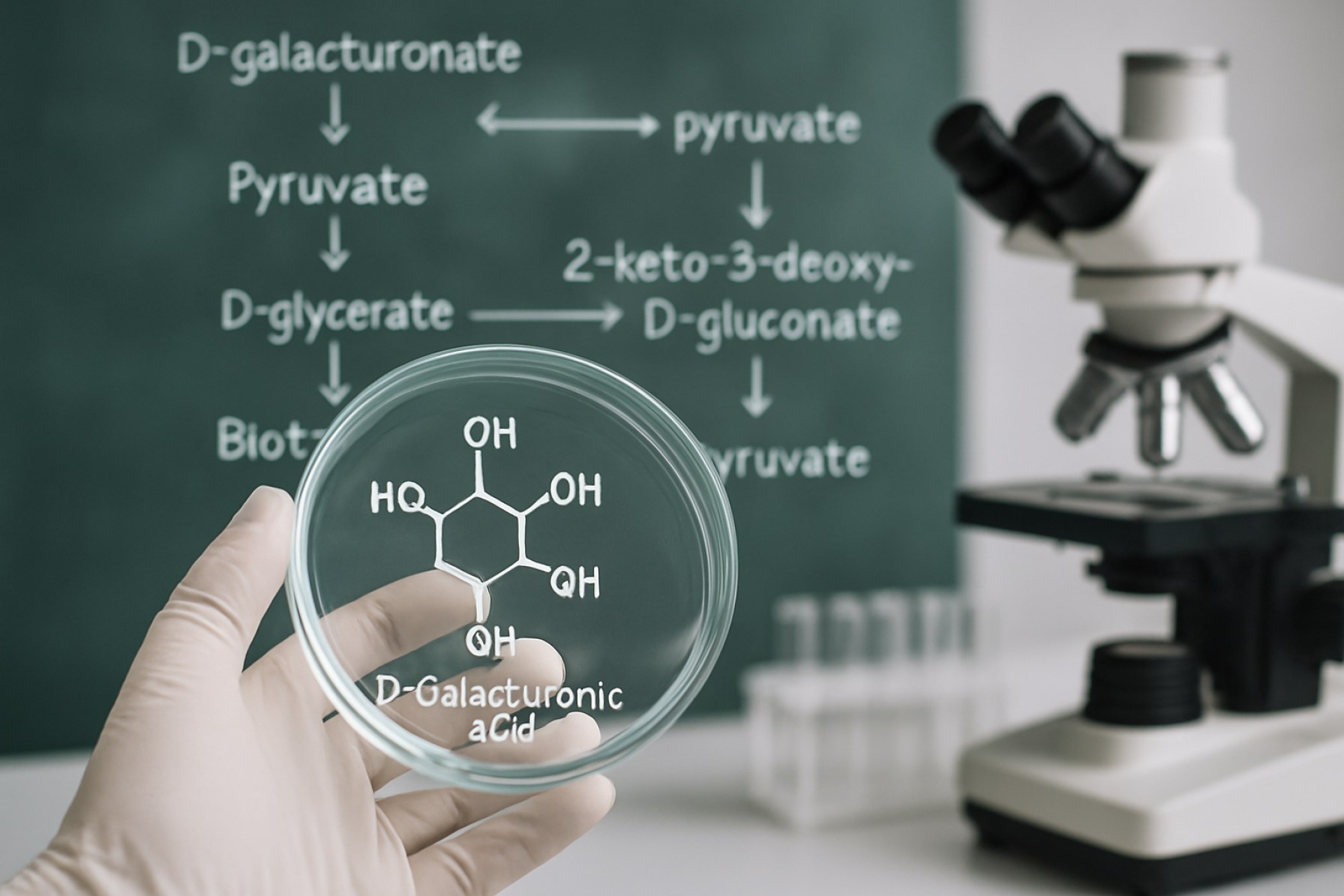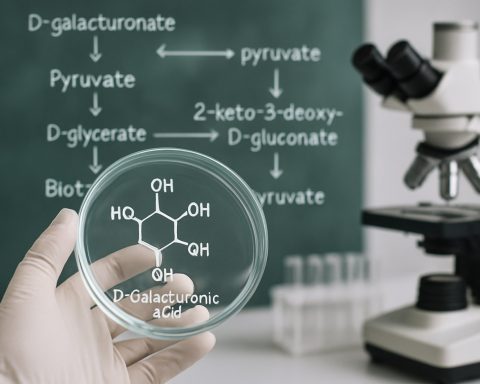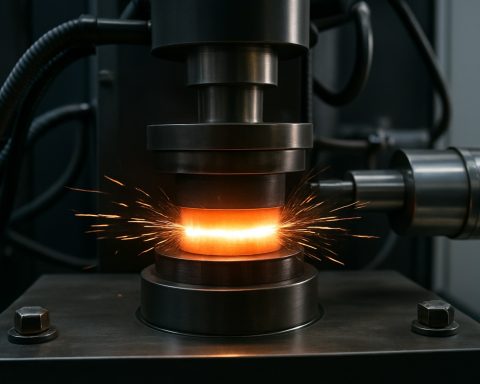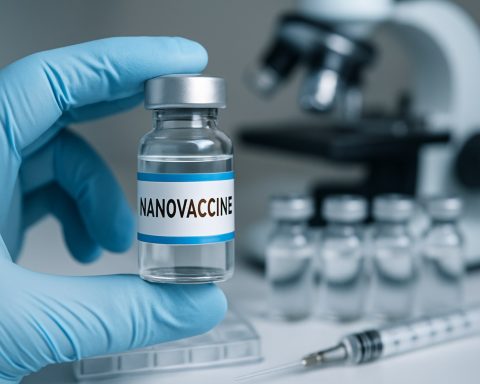D-Galacturonic Acid Degradation Pathway: Unraveling the Biochemical Steps Behind Pectin Breakdown. Discover How Microbes Transform Plant Biomass into Valuable Compounds.
- Introduction to D-Galacturonic Acid and Its Biological Significance
- Overview of the D-Galacturonic Acid Degradation Pathway
- Key Enzymes and Genes Involved in the Pathway
- Microbial Players: Organisms Capable of D-Galacturonic Acid Degradation
- Metabolic Intermediates and End Products
- Regulation and Environmental Influences on the Pathway
- Biotechnological Applications and Industrial Relevance
- Recent Advances and Future Directions in Pathway Research
- Sources & References
Introduction to D-Galacturonic Acid and Its Biological Significance
D-galacturonic acid is a key monosaccharide component of pectin, a major structural polysaccharide in the plant cell wall. As such, it is abundantly released into the environment during the decomposition of plant material. The biological significance of D-galacturonic acid lies in its role as a carbon and energy source for a variety of microorganisms, including bacteria and fungi, which have evolved specialized metabolic pathways to degrade and utilize this compound. The D-galacturonic acid degradation pathway enables these organisms to break down pectin-rich substrates, facilitating nutrient cycling in terrestrial and aquatic ecosystems and contributing to the global carbon cycle.
In microorganisms such as Escherichia coli and Aspergillus niger, the D-galacturonic acid degradation pathway involves a series of enzymatic reactions that convert D-galacturonic acid into central metabolic intermediates, such as pyruvate and glyceraldehyde-3-phosphate, which can then enter glycolysis or other metabolic routes. This pathway not only supports microbial growth on plant-derived materials but also has significant biotechnological implications. For example, the efficient microbial conversion of D-galacturonic acid is crucial for the production of biofuels, organic acids, and other value-added products from agricultural waste streams rich in pectin. Understanding the molecular mechanisms and regulation of this pathway is therefore of interest for both environmental microbiology and industrial biotechnology National Center for Biotechnology Information, UniProt.
Overview of the D-Galacturonic Acid Degradation Pathway
The D-galacturonic acid degradation pathway is a crucial metabolic route that enables various microorganisms and plants to utilize D-galacturonic acid, the principal component of pectin, as a carbon and energy source. This pathway is particularly significant in the context of plant biomass decomposition, as pectin is a major structural polysaccharide in plant cell walls. The degradation process begins with the enzymatic hydrolysis of pectin, releasing D-galacturonic acid monomers. These monomers are then transported into the cell, where they undergo a series of enzymatic transformations that ultimately feed into central metabolic pathways such as glycolysis and the tricarboxylic acid (TCA) cycle.
In bacteria such as Escherichia coli and Aspergillus niger, the pathway typically involves the reduction of D-galacturonic acid to L-galactonate, followed by dehydration and further conversion to pyruvate and glyceraldehyde-3-phosphate. These intermediates are then assimilated into the cell’s primary metabolic network, supporting growth and energy production. The genetic and enzymatic components of this pathway have been well characterized in several model organisms, revealing both conserved and unique features across different taxa National Center for Biotechnology Information.
Understanding the D-galacturonic acid degradation pathway has significant biotechnological implications, particularly for the development of microbial strains capable of efficiently converting pectin-rich agricultural waste into value-added products such as biofuels, organic acids, and platform chemicals Elsevier. Ongoing research continues to explore the regulation, diversity, and engineering of this pathway to enhance its utility in sustainable bioprocessing applications.
Key Enzymes and Genes Involved in the Pathway
The D-galacturonic acid degradation pathway is orchestrated by a series of specialized enzymes and their corresponding genes, which facilitate the conversion of D-galacturonic acid—primarily derived from pectin—into central metabolic intermediates. In fungi such as Aspergillus niger, the pathway typically begins with the action of D-galacturonate reductase (encoded by gaaA), which reduces D-galacturonic acid to L-galactonate. This is followed by L-galactonate dehydratase (gaaB), catalyzing the dehydration to 2-keto-3-deoxy-L-galactonate. The subsequent steps involve 2-keto-3-deoxy-L-galactonate aldolase (gaaC), which cleaves the compound into pyruvate and L-glyceraldehyde, and L-glyceraldehyde reductase (gaaD), converting L-glyceraldehyde to glycerol. These enzymes are tightly regulated at the transcriptional level, often in response to the presence of pectin or its breakdown products in the environment National Center for Biotechnology Information.
In bacteria such as Escherichia coli, a different but functionally analogous set of enzymes is involved, including uronate isomerase (uxaC), mannonate dehydratase (uxaA), and 2-keto-3-deoxygluconate aldolase (kdgA). These genes are often organized in operons, allowing coordinated expression in response to substrate availability UniProt. The diversity of enzymes and regulatory mechanisms across species highlights the evolutionary adaptation of microorganisms to efficiently utilize D-galacturonic acid as a carbon source.
Microbial Players: Organisms Capable of D-Galacturonic Acid Degradation
A diverse array of microorganisms possess the metabolic machinery to degrade D-galacturonic acid, a major component of pectin in plant cell walls. Among bacteria, members of the genera Erwinia, Pseudomonas, and Bacillus are well-documented for their ability to utilize D-galacturonic acid as a carbon source. These bacteria typically employ the isomerase pathway, converting D-galacturonic acid to pyruvate and glyceraldehyde-3-phosphate, which then enter central metabolic routes National Center for Biotechnology Information. In addition, certain soil and plant-associated bacteria, such as Agrobacterium tumefaciens and Escherichia coli, have been shown to harbor genes encoding enzymes for D-galacturonic acid catabolism, often organized in operons that are inducible by the substrate UniProt.
Fungi also play a significant role in D-galacturonic acid degradation, particularly filamentous species like Aspergillus niger and Trichoderma reesei. These organisms secrete a suite of pectinolytic enzymes, including polygalacturonases and pectin lyases, to depolymerize pectin and release D-galacturonic acid, which is then metabolized via the reductive pathway National Center for Biotechnology Information. Yeasts such as Saccharomyces cerevisiae generally lack native pathways for D-galacturonic acid utilization, but metabolic engineering has enabled some strains to process this sugar acid, expanding their utility in biotechnological applications ScienceDirect.
The diversity of microbial players capable of D-galacturonic acid degradation underpins the ecological recycling of plant biomass and offers promising avenues for the valorization of agricultural residues in industrial biotechnology.
Metabolic Intermediates and End Products
The D-galacturonic acid degradation pathway involves a series of enzymatic reactions that convert D-galacturonic acid, a major component of pectin, into central metabolic intermediates and end products. In microorganisms such as Aspergillus niger and Escherichia coli, the pathway typically begins with the reduction of D-galacturonic acid to L-galactonate, catalyzed by D-galacturonate reductase. L-galactonate is then dehydrated to 2-keto-3-deoxy-L-galactonate, which is subsequently cleaved into pyruvate and L-glyceraldehyde. L-glyceraldehyde can be further metabolized to glycerate and then to 2-phosphoglycerate, an intermediate of glycolysis, thereby integrating the pathway into central carbon metabolism National Center for Biotechnology Information.
In fungi, an alternative oxidative pathway has been described, where D-galacturonic acid is oxidized to galactaric acid before further breakdown. The main end products of these pathways are pyruvate and glyceraldehyde-3-phosphate, both of which feed into the tricarboxylic acid (TCA) cycle and glycolysis, respectively. This metabolic flexibility allows organisms to utilize D-galacturonic acid as a carbon and energy source, especially in environments rich in plant-derived polysaccharides UniProt.
The identification of these intermediates and end products has been crucial for metabolic engineering efforts aimed at valorizing pectin-rich agricultural waste, enabling the production of biofuels and value-added chemicals from renewable resources ScienceDirect.
Regulation and Environmental Influences on the Pathway
The regulation of the D-galacturonic acid degradation pathway is intricately linked to both genetic and environmental factors, reflecting the adaptive strategies of microorganisms and plants in response to fluctuating nutrient availability. In bacteria such as Escherichia coli and Agrobacterium tumefaciens, the expression of genes encoding key enzymes in this pathway is tightly controlled by the presence of D-galacturonic acid and related pectic substances. Inducible operons, such as the uxa and uxu operons, are upregulated in the presence of D-galacturonic acid, ensuring efficient catabolism only when the substrate is available, thereby conserving cellular resources National Center for Biotechnology Information. Additionally, global regulatory systems, including catabolite repression, modulate the pathway in response to the presence of preferred carbon sources like glucose, further fine-tuning metabolic fluxes UniProt.
Environmental factors such as pH, temperature, and oxygen availability also significantly influence the activity of the D-galacturonic acid degradation pathway. For instance, optimal enzyme activity is often observed at slightly acidic pH, reflecting the natural conditions of decaying plant material where pectin is abundant. Oxygen levels can dictate whether the pathway proceeds via aerobic or anaerobic routes, impacting the end products and energy yield European Bioinformatics Institute. Furthermore, the presence of other microbial communities and their metabolic byproducts can either enhance or inhibit pathway efficiency through competitive or cooperative interactions. Collectively, these regulatory and environmental influences ensure that the D-galacturonic acid degradation pathway is dynamically responsive to ecological and physiological contexts.
Biotechnological Applications and Industrial Relevance
The D-galacturonic acid degradation pathway holds significant promise for biotechnological and industrial applications, particularly in the context of sustainable bioprocessing and valorization of agricultural waste. D-galacturonic acid is the principal component of pectin, a polysaccharide abundantly present in fruit and vegetable residues. Harnessing microbial or enzymatic pathways to degrade D-galacturonic acid enables the conversion of pectin-rich biomass into value-added products such as bioethanol, organic acids (e.g., galactonic acid, pyruvate), and platform chemicals for the bioplastics industry. For instance, engineered strains of Escherichia coli and Aspergillus niger have been developed to efficiently metabolize D-galacturonic acid, facilitating the production of biofuels and biochemicals from citrus peel and sugar beet pulp waste streams Nature Communications.
Moreover, the pathway’s enzymes, such as D-galacturonate reductase and L-galactonate dehydratase, are targets for metabolic engineering to improve substrate utilization and product yields. The integration of D-galacturonic acid catabolism into industrial microbial platforms expands the feedstock base for biorefineries, reducing reliance on food crops and supporting circular economy initiatives Biotechnology Advances. Additionally, the pathway’s intermediates can serve as precursors for the synthesis of rare sugars and specialty chemicals, further enhancing its industrial relevance. As research advances, optimizing the D-galacturonic acid degradation pathway will be crucial for the economic and environmental sustainability of future biotechnological processes Frontiers in Microbiology.
Recent Advances and Future Directions in Pathway Research
Recent years have witnessed significant progress in elucidating the molecular mechanisms and regulatory networks governing the D-galacturonic acid degradation pathway, particularly in fungi and bacteria. Advanced omics technologies, such as transcriptomics and metabolomics, have enabled the identification of novel genes and enzymes involved in the catabolism of D-galacturonic acid, a major component of pectin-rich plant biomass. For instance, the discovery of alternative metabolic routes and previously uncharacterized transporters in Aspergillus niger and Trichoderma reesei has expanded our understanding of the pathway’s diversity and adaptability National Center for Biotechnology Information. Furthermore, synthetic biology approaches have facilitated the engineering of microbial strains with enhanced D-galacturonic acid utilization, paving the way for more efficient bioconversion of agricultural waste into value-added products such as bioethanol and organic acids Elsevier.
Looking ahead, future research is likely to focus on integrating systems biology with metabolic engineering to optimize the D-galacturonic acid degradation pathway for industrial applications. Key challenges include improving substrate uptake, minimizing by-product formation, and achieving robust performance under industrial conditions. Additionally, the exploration of D-galacturonic acid metabolism in non-model organisms and environmental microbiomes may reveal novel enzymes and regulatory elements with unique properties. The continued development of high-throughput screening and genome editing tools will be instrumental in accelerating these discoveries and translating them into sustainable biotechnological processes Nature.
Sources & References
- National Center for Biotechnology Information
- UniProt
- European Bioinformatics Institute
- Nature Communications
- Frontiers in Microbiology








